162 episodes
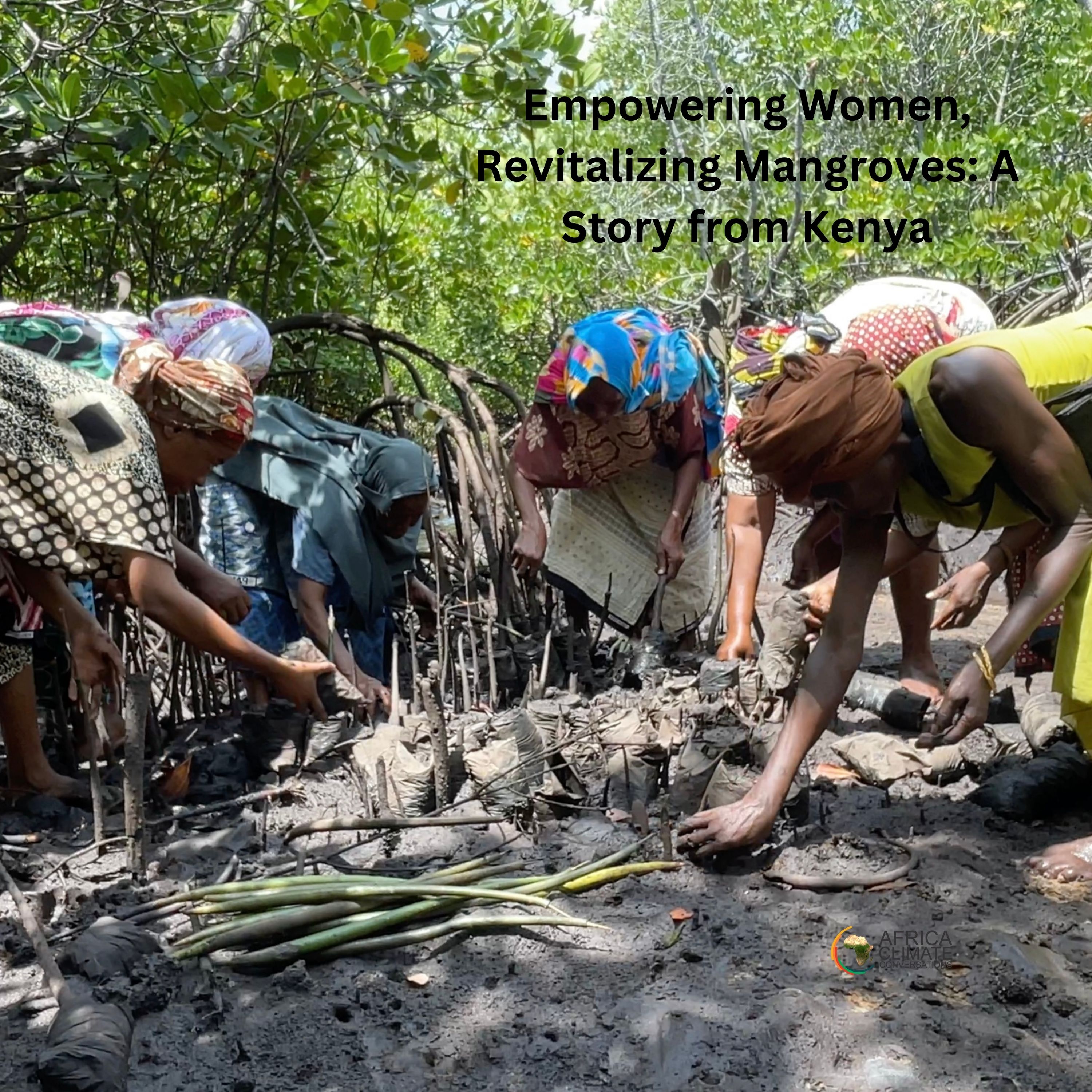

Featured today are a group of ladies who are establishing a livelihood by planting mangroves. About sixty kilometres south of Mombasa in Kwale County, in the small fishing town of Msambweni, a group of fifteen women from the Munje village joined together during the COVID-19 outbreak. A community-based organisation with 30 members has developed out of them after around four years. They are planting mangrove propagules along the southern coast of Kenya, around Vanga-Funzi Bay, to preserve a portion of mangrove forest. Additionally, the women are enhancing their livelihoods through activities such as beekeeping, eco-tourism, waste management, conservation education, and basket weaving. Approximately 400,000 propagules had been planted in nurseries by the end of last year by the women.


Today we meet a Kenyan community saving the coral reefs along the Kenyan coast. Coral reefs along the Lamu-Kiunga area in Lamu County, a small archipelago north of Mombasa in Kenya, have degraded over the years. Pate Island, the largest island in the Lamu Archipelago, lies between the towns of Lamu and Kiunga, which depend on fishing. However, fishery productivity depends on healthy corals. How did the coral degradation impact these communities’ livelihoods? What degraded these corals? What are these communities doing about it?
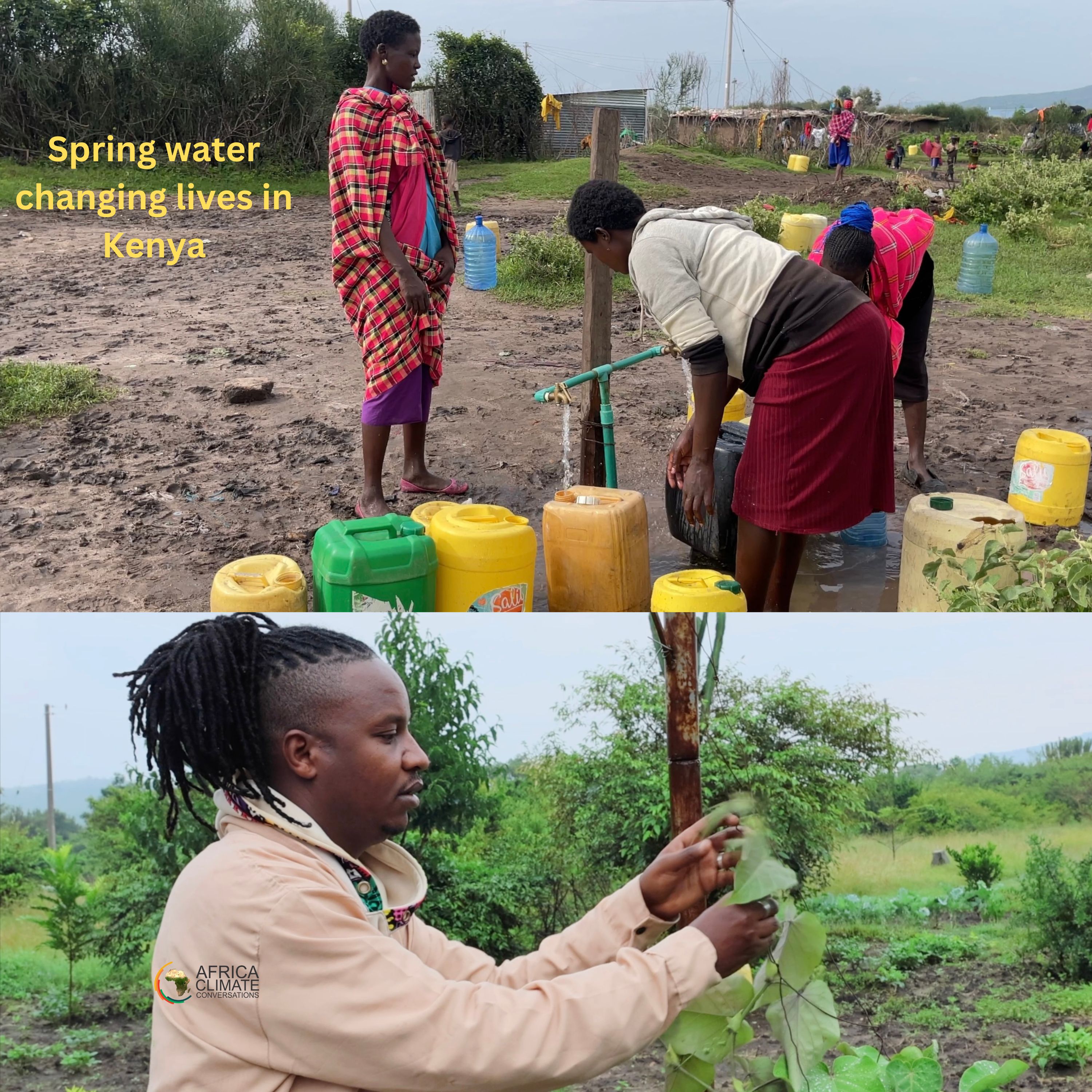

Women in Olailamutia, a town in Kenya's Narok County, have had problems with diarrhoea, stomachaches, and skin rashes for many years. Having access to clean drinking water from a spring is helping to get rid of these problems. Families here got water to drink from a river where they also took baths. The river in question has been contaminated due to chemical use, upstream intensive irrigation, and the discharge of untreated sewage into which they bathed their children. In a town that only gets its food from outside sources, having access to water also makes it possible to grow food. Narok County is one of 21 dry or semi-arid counties in Kenya. It is home to the beautiful Masai Mara. Extreme weather events like storms and droughts have also become more common and stronger.
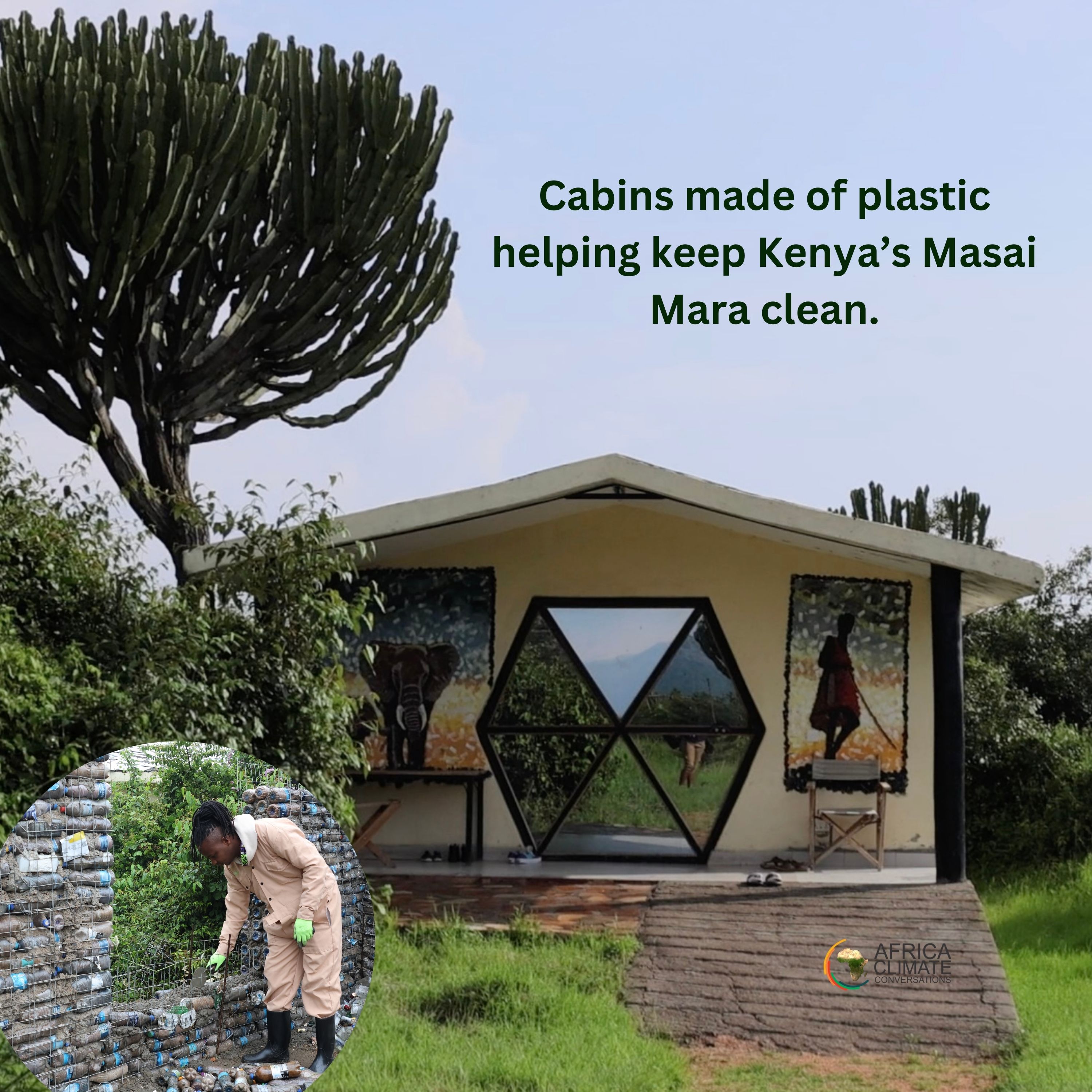

In today's episode, we meet Isaac Macharia, a Kenyan social entrepreneur who makes cabins out of plastic to keep Kenya’s Masai Mara clean. In 2015, Macharia was on his usual tour-guiding routine at the Masai Mara in Kenya. It bothered him. He decided to construct cabins using not only plastic bottles, but also stashing and hiding every non-biodegradable waste you can think of—straws, broken glass bottles, clothes, beer cans, to name just a few—right in there during construction. To harden and convert the plastic bottle into a smaller brick, they add dry sand. The contractors used plastic to make the cabin roof. Contracted local women collect these bottles and fill them with sand or paper.


Picture this. It’s a lovely evening. You and your loved one are seated somewhere, enjoying some juice or beer from a glass made out of liquor bottles collected from a dumping site. How does that sound? On today’s episode, meet a young Kenyan lady – Mary Njoki, repurposing waste glass at Masai Mara.
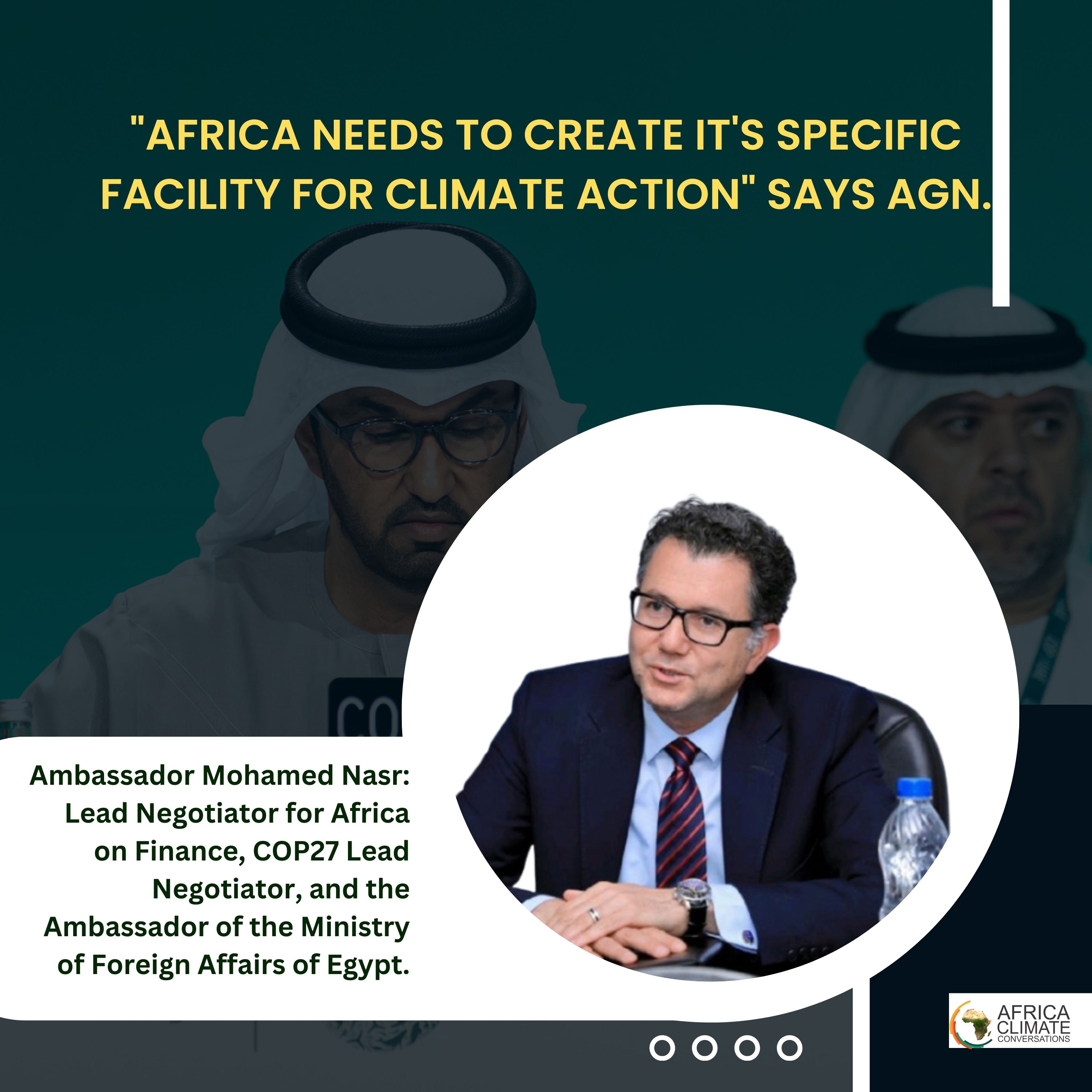

For effective climate action in Africa to take shape, the African Group of negotiators lead negotiator on finance, Ambassador Mohamed Nasr, told the Africa Climate Conversations that the continent must self-assess and work on its own modalities to achieve climate action. Among the things the continent should work on is creating an Africa-specific platform outlining specific projects and programs for climate action that will collect and present all climate projects from the continent as a package. Nasr says specific projects and programs with clear needs presented to the negotiators will be easily supported “compared to what we have now which is more generic,” he added. At COP28, nations embarked on the Global Stocktake (GST) to assess collective progress towards achieving the long-term goals set under the Paris agreement. The GST is assessing mitigation, adaptation, and means of implementation, considering equity and the best available science as well as loss and damage. With the GST being party-driven, there is a need for the continent to be specific on their needs and strategic to push for that means of implementation critical for climate action nationally and locally.
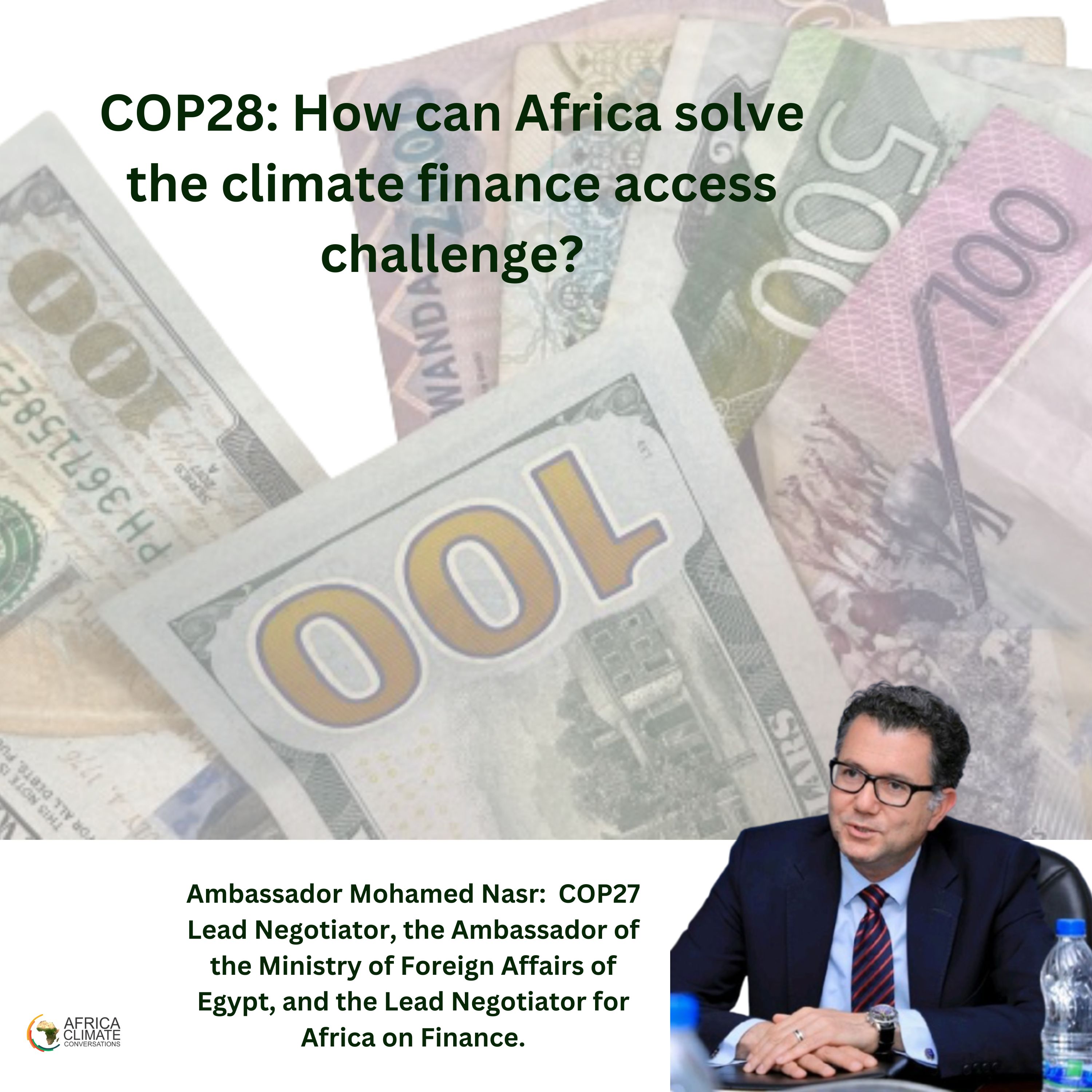

The climate finance needs of developing countries have risen way beyond the 100 billion USD promised by developed countries 15 years ago. The recent UN 2023 adaptation gap report estimates the cost of adaptation at US$215 billion per year this decade. Access to finance, including means of implementation that are technology and capacity, is a catalyst not just for development but also for adapting to climate change, averting loss and damage, mitigating further climate impacts, and building trust among developed and developing countries. But finance under the climate negotiation process had had a long process. So, on this episode with Ambassador Mohamed Nasr, who is the Africa lead negotiator on finance and COP27 lead negotiator, as the globe embarks on negotiating a New Collective Quantified Goal on Finance, we discuss how Africa can solve the climate finance access challenge, among other key issues such as global taxation and political impacts on negotiation outcomes.


COP28 takes place against the backdrop of increased financial needs to address climate change adaptation, mitigation, as well as loss and damage. Just to mention, the 2023 UNEP adaptation gap report estimates the cost of adaptation in developing countries at US$215 billion per year this decade. For Africa, the continent requires at least $56 billion annually for adaptation alone by 2030. Between 2020 and 2030, African countries will require an estimated $2.8 trillion in funding to fund the continent's conditional climate plans, or NDCs. In his speech, COP28 president Sultan Al Jaber committed to doing his part to ensure COP28 unlocks climate finance for developing nations. On loss and damage, the Presidency gave the first major milestone of COP28, delivering a historic agreement to operationalize the Fund—though the World Bank is yet to review and agree to the technical commitment conditionalities—with the UAE announcing it would commit $100 million to the Fund.
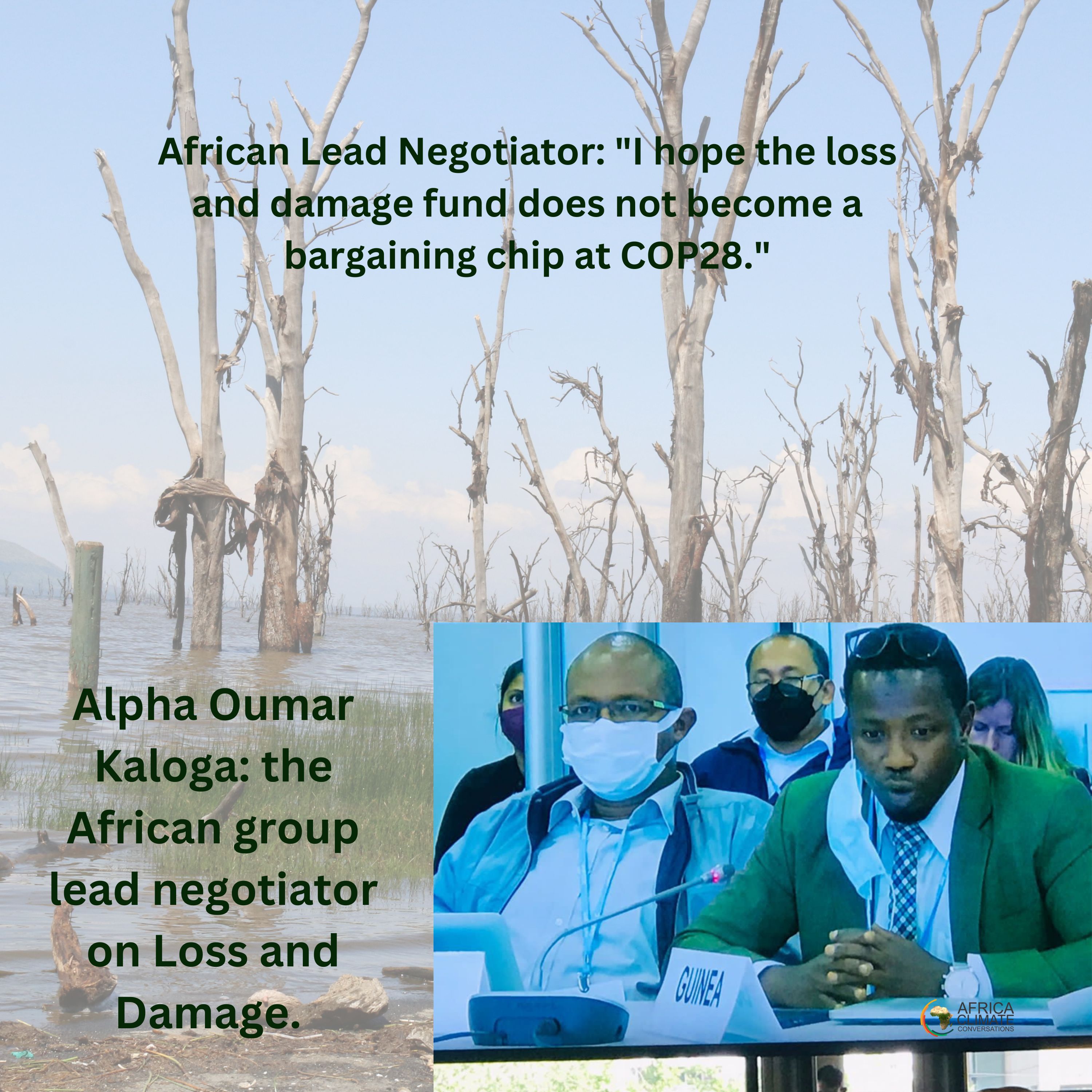

A 24-member transitional committee on loss and damage issued a proposal for a new loss and damage fund ahead of the 28th UN Climate Summit (COP28) taking place in Dubai this November. According to Alpha Oumar Kaloga, the African group's lead negotiator on loss and damage, the final decision was made in a tense atmosphere; thus, there is a need to understand the status of the final decision, as the United States had objected at the last moment. Kaloga told the Africa Climate Conversations podcast that developing countries have made compromises because “we cannot abandon our people. We cannot wait any longer, and we recognise that we are in a multilateral process and must make compromises. We accepted the World Bank (a red line) as the financial intermediary fund, but only under conditions." Developing countries have been pushing for a loss and damage fund since 1991, when the Alliance of Small Island States proposed creating an international insurance pool to compensate for loss and damage. The fund is intended to help developing nations recover from losses and harm caused by climate change. It is anchored on the UNFCCC’s principle of common but differentiated responsibilities and respective capabilities, which underlines that the global challenge of tackling climate change should be met in a fair and equitable manner. "We want justice; we want loans to safeguard our progress, but it only takes one dramatic occurrence to undermine what has taken decades to establish." Says Kaloga. However, according to Kaloga, as part of the Paris agreement package, the world community agreed during COP21 in Paris that there would be no compensation and no culpability for loss or damage. "The devil is in the details; people only see the Paris agreement, but the operational decisions, and particularly paragraph 54, speak about no liability, no compensation”. However, though Article 8 of the Paris Agreement does not provide a basis for any liability or compensation, it specifies some areas of cooperation and facilitation to enhance understanding of and action to address loss and damage, such as irreversible loss and damage, slow onset processes, early warning systems, and risk management. Will the transitional committee proposal sail through at COP28, or is it likely to be a bomb? Have a listen.


Lake Ol' Bolossat is the only lake in the Kenyan highlands, situated in Nyandarua County, about a three and a half-hour drive from Kenya’s capital, Nairobi. The lake is situated in the valley between the northwestern slopes of the AberdareRange of Mountains and Dundori Ridge. The lake forms the head waters of the Ewaso Ngiro North Basin, Kenya's largest basin, offering a variety of habitats ranging from open water through floating marsh and swamps to open grasslands and riverine forests along rivers and springs that feed the lake. One of the unique things about Lake Ol’Bolossat is that it has both fresh and saline waters that never mix at any given time. It's also an internationally recognised wetland as a Key Biodiversity Area. It's Kenya’s 61st Important Bird Area, with over 300 bird species. It is a breeding site for endemic and endangered birds and an international flight corridor for migratory birds. Among the birds nesting here are the Grew-crowned cranes. The grey-crowned crane is classified as endangered on the IUCN Red List. These birds are non-migratory; however, they undertake local and seasonal movements and are most abundant in Uganda, Kenya, and Tanzania, according to the International Crane Foundation. On my recent trip to Nyandarua County, I caught up with George Ndungu, the Cranes Conversation Volunteer’s founder. Ndungu tells us more about their work with local communities to protect these beautiful birds and benefit the locals.


Economic and non-economic loss and damage associated with the extreme event are increasing in developing countries. Extreme events such as droughts, floods, cyclones, tropical storms, and forest fires have significantly increased globally in intensity, frequency, and scope. The devastating floods and landslides in Bangladesh caused an estimated loss of USD 176.0 million in housing, an estimated damage of USD 230.8 million in total damage in the agriculture and livestock sectors, and an estimated loss and damage of USD 55.7 million in the water, sanitation, and hygiene services sectors, according to the Ministry of Disaster Management and Relief. The Loss and Damage Collaboration's calculated midpoint estimates of economic loss and damage in Global South countries suggest that losses totaled 425 billion USD in 2020 and 671 billion USD in 2030. After 30 years of negotiations, a new financial mechanism and a loss and damage fund to aid developing nations were agreed upon at the 27th UN Climate Summit last year at Sharm El-Sheikh, Egypt. A 24-member transitional committee is expected to give recommendations on how to implement both the new financial arrangements and the fund this year in Dubai for consideration and adoption at the 28th UN Climate Summit (COP28). Their key role, according to the United Nations Framework Convention on Climate Change (UNFCCC), is to establish institutional arrangements, modalities, structure, governance, and terms of reference for the fund, define the elements of the new funding arrangements, identify and expand sources of funding, and ensure coordination and complementarity with existing and new funding arrangements. Loss and damage compensation, which is part of climate justice issues, goes back to the UNFCCC treaty, which acknowledges both the global north and the global south's contributions and responsibilities to the climate catastrophe. It is founded on the UNFCCC's premise of shared but differentiated responsibilities and respective capabilities, which emphasises the importance of addressing the global challenge of climate change in a fair and equitable manner. What happens at COP28 in Dubai and beyond, as far as not just actualizing the loss and damage fund but making it accessible, is critical for climate justice, rebuilding trust, and ensuring that communities and nations in developing states are supported to rebuild better and sustainably.


Not only are local communities and organisations essential for conservation but also for addressing issues of sustainability, poverty reduction, and economic development in Africa. However, local organisations collaborate with international organisations to assist these communities in protecting the biodiversity they inhabit, conserving fauna, adapting to climate change, and enhancing their social and economic well-being. According to a 2023 report published by Maliasili in September, partnerships between global conservation organisations and their African counterparts are crucial to the success of conservation efforts. However, these partnerships continue to confront obstacles regarding power dynamics, transparency, and interest alignment. Resson Kantai Duff, Portfolio Funding Director at Maliasili, told the Africa Climate Conversations that the approach, structure, and maintenance of these partnerships must be collectively reimagined. Today's episodes examine the report's findings, the financing issues at the heart of the partnership challenges, building trust, why African conservation organisations must look inward within Africa for funding, and how international conservation organisations can most effectively address the partnership dilemma for future effective collaborations.


During the 28th United Nations climate summit, hosted by the Government of the United Arab Emirates (UAE) in December 2023, the first global stocktake, which is intended to map out the path to achieving the Paris Agreement's main objectives, will conclude. The global stocktake, which is anticipated to occur every five years, will assess the world's progress in reducing greenhouse gas emissions, enhancing resilience to climate impacts, and securing financing and support to combat the climate crisis. Botswana's David Lesole, a seasoned African negotiator on climate change, reiterates that it is extremely difficult to measure progress where goals are unspecific. He warns that it is difficult to measure progress because the majority of African national climate commitments (NDCs) do not specify projects that will be implemented to address climate-related measures in critical sectors. As Africa convenes in Nairobi for the Africa Climate Weeks, what must the continent contemplate prior to the global stocktaking? Given that Africa is the continent most impacted by climate change, why should it prioritise building trust between its governments and its most vulnerable citizens?


"After colonialism, religion depicted that we "Africans" lived in a satanic manner," argues Florence Monde. Mwauluka, a woman of 85 years old, founded the Limulunga la Makuwa craft women's club in the Mongu district of Zambia's Western Province. In today's episode, Mwaluka recalls her childhood before colonialism and the introduction of Christianity to her Lozi people, who have resided in the Barotse floodplains for over four centuries. The Lozi used water and herbs from their natural environment for medicinal purposes. The community cleared canals that connected their respective homesteads. The areas adjacent to the canals were also used for agriculture. "They did so because they believed it was their duty to the environment, as well as to maintain peace with their neighbours and ward off pests and diseases," Mwaluka explains. The Barotse floodplains have deteriorated, according to her, because the community was discouraged from conserving their environment without monetary compensation following Zambia's independence. In what other ways have religion, colonialism, and modern education influenced the conservation of the Barotse floodplains?


Meet Florence Monde. Mwauluka is an 85-year-old woman popularly known here as Auntie Flo. She is the founder of the Limulunga la Makuwa craft women's club in Mongu district, Western Province, Zambia. Here, 10 women join up to weave mats, mattresses, hats, and baskets, as well as mould pots used as cooking pots, refrigerators, and water purifiers. These products are made from natural materials such as roots, grass, reeds, soil, and water obtained from the Barotse floodplains, which these women have dedicated their lives to protecting. They integrate these natural resources with plastics to craft bags, mattresses, pots, shopping bags, hats, and mats, among others. But Baita Chilemu, working with Auntie Flo, says having few women in leadership among the Barotse people and a lack of markets is a huge setback in their conservation efforts. The Barotse floodplain is a vast land area classified as a Ramsar site, with over 300 bird species and over 130 documented fish species. When flooded, it can reach over 550 000 hectares, acting as a sponge that slowly releases water to the nearby regions that receive low rainfall. But because of climate change, the Barotse loses about 1,500 mm of water annually from evaporation, which reduces the amount of water flowing in the lower Zambezi River system


Is there a solution to the persisting water crisis in Zimbabwe? I ask Professor Tamuka Nhiwatiwa, a Senior Lecturer at the Department of Biological Sciences, University Lake Kariba Research Station, at the University of Zimbabwe. Tamuka says Harare city in Zimbabwe is built on its catchment area. It relies on treating polluted waters from Lake Chivero and the Manyame River for domestic use. Lake Chivero and the Manyame rivers once hosted international fishing tournaments. However, today, these rivers are basically sewerage ponds. Why? Is there a solution to this persistent water crisis? Click to listen.
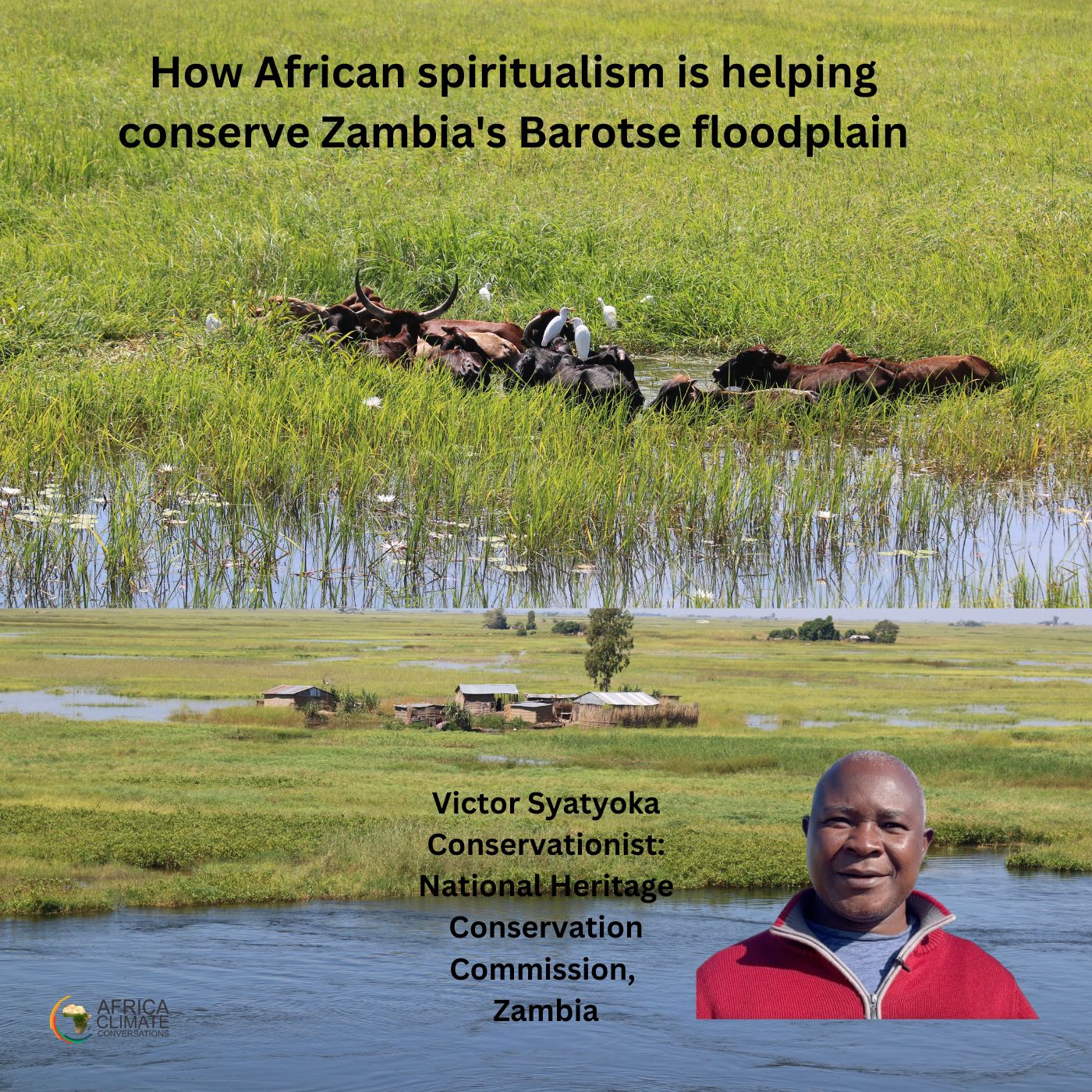

When the Lozi people migrated to the Barotse Floodplains in western Zambia about 400 years ago, they heaped soil on platforms and settled in the floodplain without destroying it. The Lozi developed canals they use to access villages and farmlands and instilled African cultural and spiritual beliefs that have been used to protect the fish, water, animals, lagoons, and biodiversity within the floodplains as well as the forests on the higher ground they migrate to annually when the floodplains flood. On this episode, Victor Syatyoka, a conservationist with the National Heritage Conservation Commission in Zambia, expounds more on this cultural and spiritual conservation practice.


Did you know that the Barotse floodplain, located in the upper Zambezi basin in Zambia’s western province, has over 339 bird species and over 129 documented fish species? When flooded, it can reach over 550 000 hectares, acting as a sponge that slowly releases water to the nearby regions that receive low rainfall. It's key for supplying water to downstream communities, and the Kariba dam relied upon by Zambia and Zimbabwe for hydroelectric energy. But, due to high temperatures in the area, the Barotse loses approximately 1,500mm of water per year through evaporation, affecting the water available along the Zambezi River system. This week, Dr. Machaya Chomba, the Upper Zambezi Program Manager at the World Wide Fund (WWF) for Nature Zambia, talks about its importance, major threats, and sustainable conservation solutions.
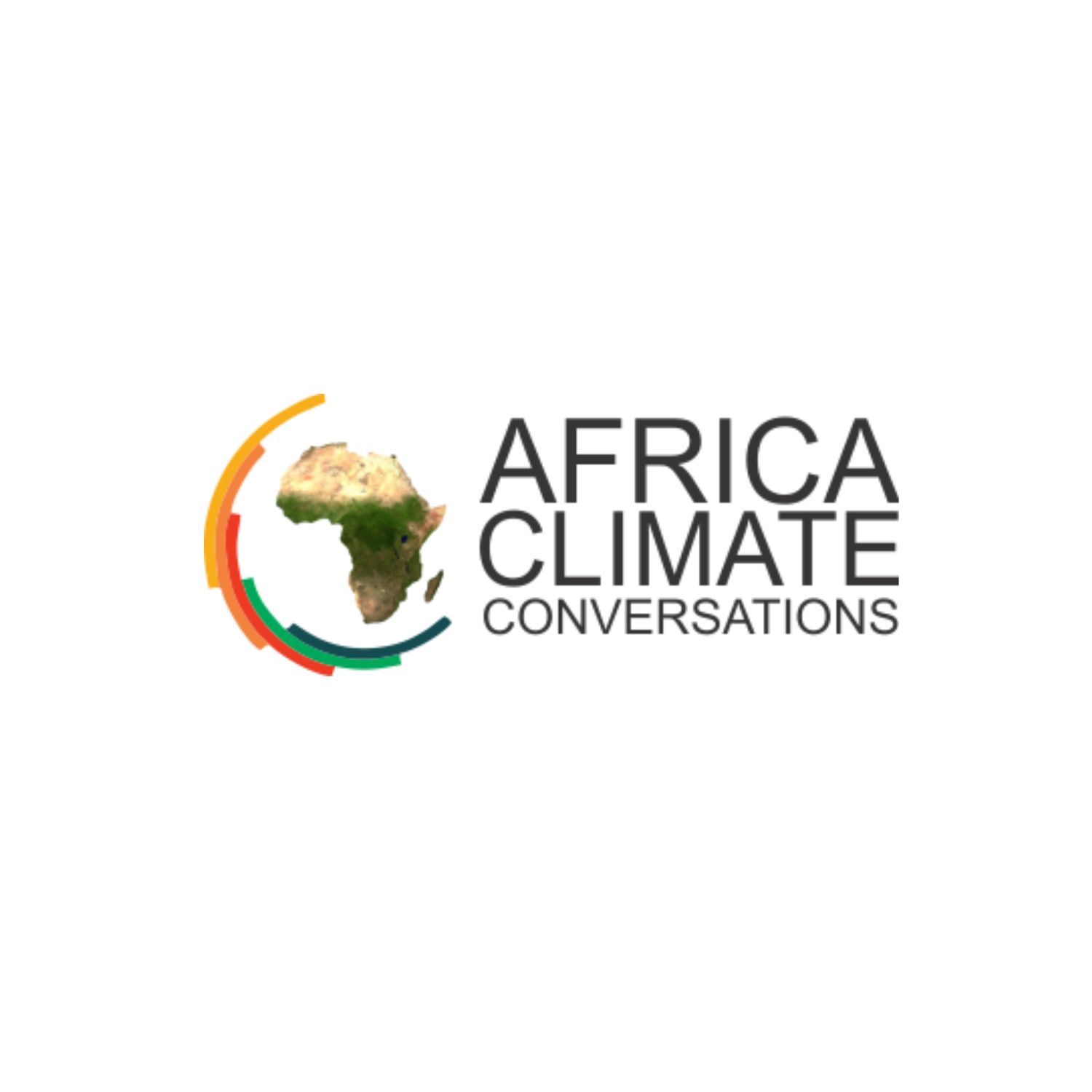

In order to manage and safeguard the nation's forests, Zambia has a proactive 2015 forest act that brings together stakeholders, including local communities. However, extensive deforestation is being caused by the prospecting for new minerals, the logging of indigenous trees like rosewood and African teak, and the conversion of forest area for agriculture. The origins of significant river basins like the Zambezi, Luangwa, and Kafue are in danger, according to Abel Siampale, the World Wide Fund for Nature (WWF) Zambia forestry program manager, as the nation is already seeing shifting ecological zones.


It's nature that gives humans food, air, and medicine; hence, you must give back to nature. But, decades of development have not prioritised safeguarding the environment and the people who depend on it—as a result, leading to pollution, waste disposal, deforestation, ocean acidification, the rise of greenhouse emissions like carbon dioxide and methane, water stress, and rising sea levels. Despite numerous international treaties, emissions from carbon dioxide, methane, and nitrous oxide –the three most potent gases responsible for global warming reached record highs in 2021. Is climate change the real problem? Can the world solve the climate crisis without tackling degradation?


At the foot of the Aberdare mountains in Kenya, about an hour's drive to Lake Naivasha, a youth group is encouraging farmers to preserve the grasslands to conserve the Sharpe's Longclaw bird species. The Njambini Wool Crafters buy wool from these farmers to ensure they generate income through sheep-keeping. The group produces yarns made of raw sheep wool. These yarns are sold to curio shop operators or woven into blankets, carpets, rugs, throw blankets, scarves, shawls, and socks. Samuel Bakari, an ecologist with the Friends of Kinangop Plateau, told the Africa Climate Conversations that in 2000 BirdLife international records showed between 10-20,000 mature Sharpe's longclaw birds in Kenya. Today over 20 years later, Bakari says this number has reduced to less than 2000 individuals.


About an hour and a half drive from Kenya's capital city Nairobi exists the Kinangop Plateau. It is the middle catchment area between the Aberdares /Nyandarua range of mountains and Lake Naivasha. Initially, the grassland was a 70 000 hectares of expansive treeless tussocky grasses, bogs and marshlands. Today, only less than 10 percent of the grassland remains. The land converted into agricultural land, now is a significant source of cabbages, potatoes, and carrots consumed in Nairobi, Naivasha and Gilgil town. Eucalyptus, pines and cyprus trees were grown to rid the land of the water-logged marshes and bogs. As a result, tributaries and rivers flowing into lake Naivasha have lost over 80 percent of water, as observed during the Horn of Africa's longest drought. Why were these grasslands important? why is the land use change a threat to the Sharpe's Long claw birds habitats and survival? Can they be rehabilitated back to near original states amid the demand for food as population and temperatures rise? Click to listen.


The Raya residents in Garissa - North east of Kenya - say they gave up 85 hectares (210 acres) of their land to make way for the solar power plant - the largest grid-connected solar power plant in East and Central Africa launched in December 2019, but have so far seen few benefits in return. So, who is benefitting? As Kenya aim to go 100 percent renewables what are the balances of power should the country consider? These are the things I am exploring in this second episode of our two-part series on just transitions, made by Africa Climate Conversations in collaboration with China Dialogue. Please, click to listen.


Today, I am visiting Kenya's Kereita forest - a critical water catchment area and home to the endangered Abbott's Starling bird and threatened tree species like the Prunus Africana threatened for its medical value. I am here to discover what a community forty kilometers from Kenya's capital has done to save a forest that was once plundered for firewood, grazing, wood, and arable land and protect these precious species. Please listen, and let's explore together.
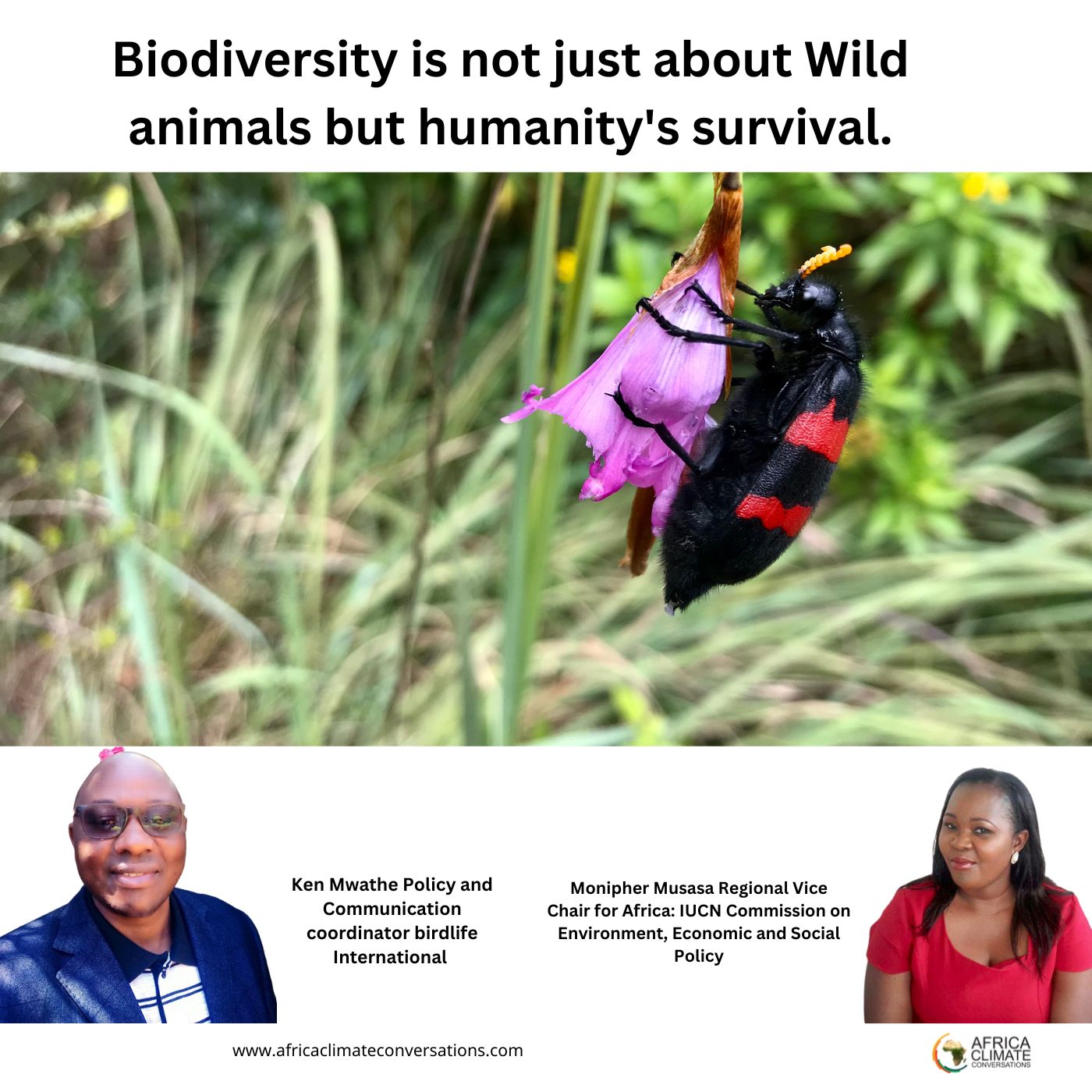

About 30 years ago in Rio de Janeiro, Brazil, agenda 21 recognized that humanity stands at a defining moment in history, confronted by worsening poverty, hunger, ill health, and the continuing deterioration of the ecosystems on which we all depend for our well-being. Years later, world leaders continue to prioritize development over the environment. Today’s episode explores the link between biodiversity and our day-to-day life, like food, water, and air. We also discuss how best nations can develop while sustaining their biodiversity and reducing emissions.
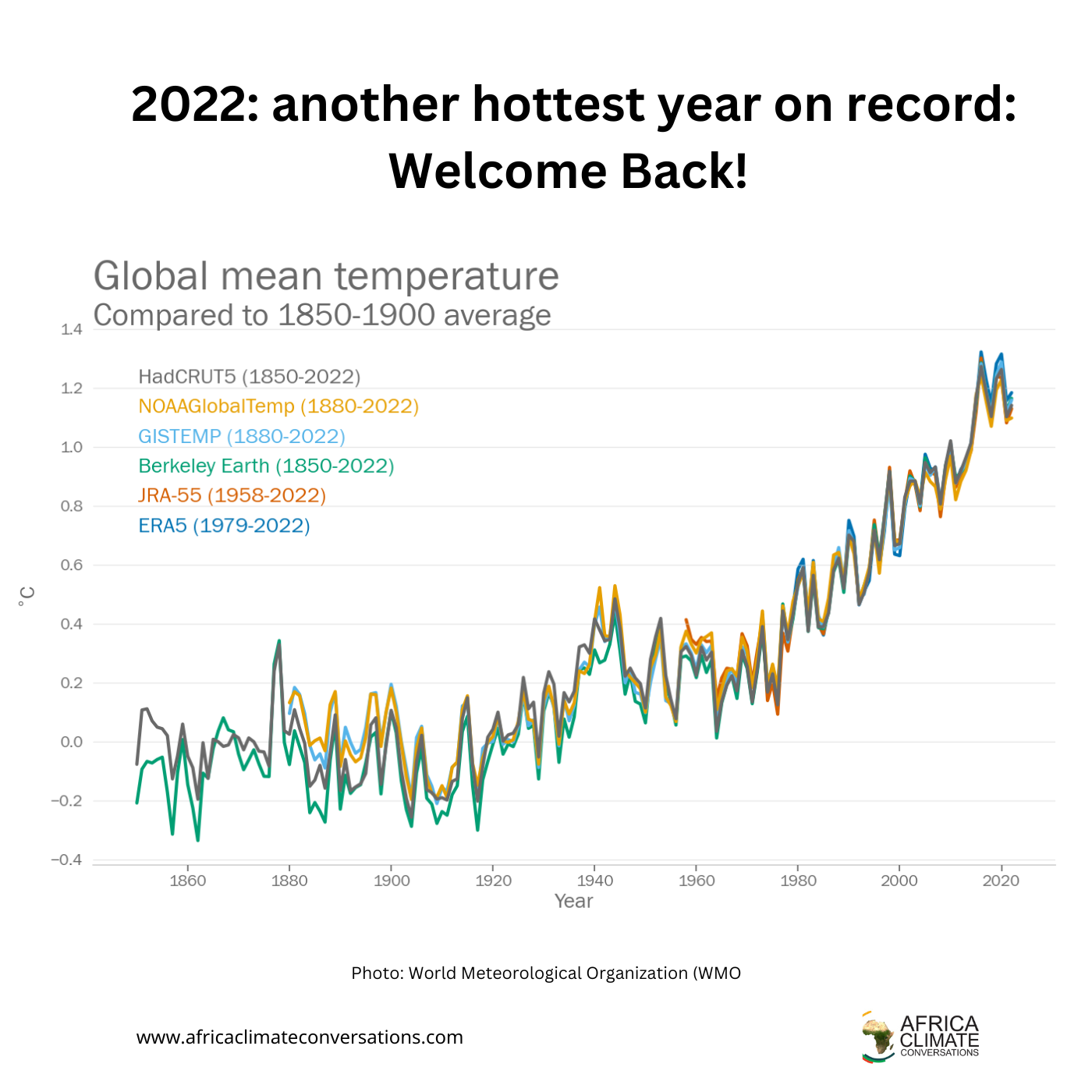

Happy New Year: 2023. Last year the year 2022, the average global temperature was about 1.15 degrees Celsius. 2022 marks the 8th consecutive year from 2015-2022 where each year the annual global temperatures have reached at least 1°C above pre-industrial levels. This is according to datasets compiled by the World Meteorological organization from six international temperature datasets. The world rich countries historically responsible for the rising emissions are still expanding their coal mines to tackle the energy crisis amid the Russia-Ukraine war. We have seen the tug of war between demonstrators and the police as they protest the clearance and demolition of a village in western Germany to make way for the expansion of a coal mine. And the world pact for nature was agreed on in Montreal Canada in December last year amid concerns by some African delegates among them the Congolese. Welcome back and buckle up as we take off this year’s climate and environmental conversations from an African perspective.
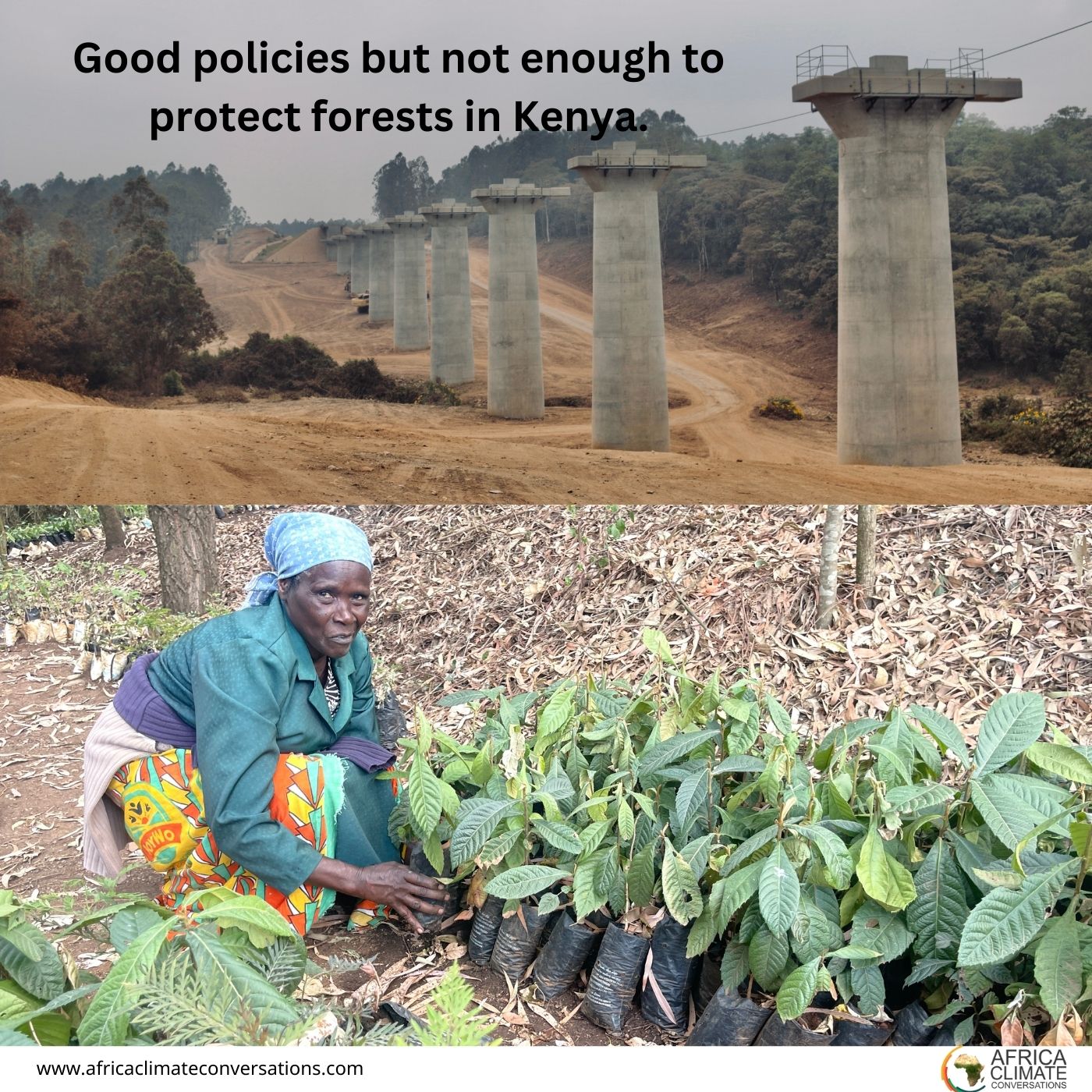

Kenya’s Standard Gauge Railway (SGR) has come with its fair share of blessings in terms of communication and transport. The Mombasa to the Kenyan capital Nairobi line was completed in 2017. Phase two of the railway aimed to link Nairobi with Malaba on the Kenya–Uganda border cut through the pristine Olooula Forest -one of the remaining Nairobi green spaces. The Oloolua Community Forest Association tried to stop it, but as Christopher Muriithi says, development had to happen. In today’s episode, in collaboration with China Dialogue, we explore the environmental impacts developments such as the SGR has caused and when demonstrations fail, what legal options do communities have to safeguard their environment from destruction?


The Sharm el-Sheikh, decision was reached early morning on last Sunday the 20th as official plenary started at 4am. Among the wins for the Continent was the establishment of a loss and damage facility which was pushed hard by the G77 and China- Africa is in this group - as well as the civil society. But vehemently opposed by the United States at the beginning. Does the Global Shield against Climate Risks divide the African continent by cherry picking some African continent by promising them funds? Will seeking the international court of Justice to provides clarity necessary for countries to make better climate decisions at COP and at home help implementation of the Paris agreement and many other treaties on environment amd human rights?


The 27th UN Climate summit is already underway till next week in Egypt’s coastal city of Sharm el-Sheikh. It is essential to recognize that this is the 27th meeting of the parties in about 30 years. Also, remember that Africa is the continent that contributes the least to global emissions – about 4 percent. In 2015, in Paris, when the Paris agreement was being passed, Africa was promised by the COP 21 presidency Laurent Fabius that the continent would be recognized for its special needs and circumstances after. But till today, it has been a push and pulls, and Africa is yet to get this promise honored. This year the agenda still did not make it to the final agenda to be negotiated. What are the special needs and circumstances Africa has been pushing for recognition? Why should Africa concentrate on building effective local and national institutions to adapt to climate change? A conversation with David Lesole, a Climatologist with the department of meteorological services in Botswana. Former African Group of negotiators (AGN) on climate change and a former climate change lecturer at the University of Botswana.


Forests and savannahs provide a wide variety of ecosystem services. They provide food and fuel. Additionally, they clean the air, filter water, and control floods, and erosion, while sustaining biodiversity. However, over the years human beings have plundered the earth prioritizing development needs over the environment. Kenya’s Olo0lua forest an urban forest located about half an hour’s drive from Kenya’s international airport has seen years of plunder as Nairobi residents quarried stones in the quest to develop the city. As climate change bites, how has Oloolua forest’s biodiversity changed? How has the once cooler neighborhood changed? What are the communities doing to protect the remaining forest?